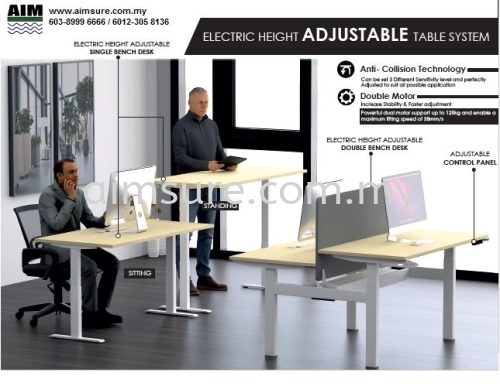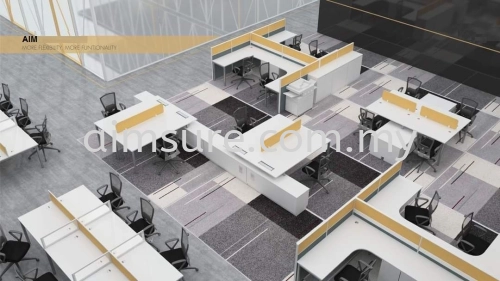It sounds like you're interested in setting up a 4-cluster office workstation with low partitions. This type of workstation arrangement can promote collaboration while still providing a degree of privacy and separation between workspaces. Here's a general outline of how you might go about designing and setting up such a workstation:
-
Space Planning and Layout: Determine the available space and the layout of the office. Identify the optimal location for the 4-cluster workstation. Consider factors such as natural light, traffic flow, and accessibility.
-
Furniture and Partitions: Choose low partitions or dividers that provide a level of privacy without completely isolating employees. Low-height screens, dividers, or panels can help define individual work areas while still allowing for easy communication and interaction.
-
Desks and Seating: Select ergonomic desks and chairs for each workstation. Ensure that each workspace is comfortable and supports proper posture. You might consider adjustable-height desks to accommodate different preferences.
-
Technology and Connectivity: Ensure that each workstation has access to power outlets and network connections. Cable management solutions can help keep the workspace organized and clutter-free.
-
Collaboration Areas: Designate a central area within the 4-cluster workstation for collaborative activities. This could include a shared table, whiteboard, or a small meeting area with comfortable seating.
-
Storage Solutions: Integrate storage options like drawers, shelves, or cabinets into each workstation. Adequate storage helps employees keep their workspaces organized and clutter-free.
-
Acoustics and Privacy: Consider acoustic panels or materials that help reduce noise and enhance privacy within each workstation. This is especially important if the low partitions don't provide enough sound isolation.
-
Personalization and Comfort: Encourage employees to personalize their workspaces with plants, artwork, or other decor. This can help create a more inviting and comfortable atmosphere.
-
Lighting: Ensure proper lighting for each workstation. A combination of ambient, task, and natural lighting can enhance the overall comfort and productivity of the space.
-
Flexibility: Design the workstation layout to be adaptable. As needs change, the arrangement can be modified to accommodate different team sizes or work requirements.
-
Safety and Regulations: Ensure that the workstation design adheres to local safety and building regulations. Fire exits, clear walkways, and accessibility considerations should be incorporated into the design.
-
Testing and Feedback: Once the workstation is set up, gather feedback from employees regarding the layout, comfort, and functionality. Make adjustments as needed to optimize the workspace.
Remember that the specific design and setup will depend on your office's unique requirements, available space, and the preferences of your team members. It's a good idea to consult with an office design professional or an interior designer to ensure that the layout and furniture choices align with your goals for the workspace.
Inquiry - 4 cluster office workstation with low partition















